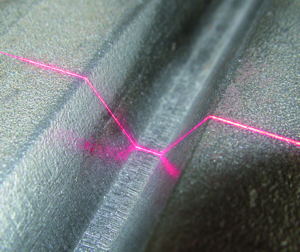Laser gap sensor fills a hole in the market
Micro-Epsilon has developed a laser-based technology for measuring and evaluating gaps and edges in various surfaces. The non-contact gapControl 2711 system can measure gap widths and depths, height differences, centre positions, angles, flushness, proximity and overlapping edges. The sensors are also suitable for quality assurance and collision avoidance applications.

Measuring gaps can be complex, with different industries using different definitions of gaps and how they should be measured and evaluated. The new system guides the user quickly through the setting up and configuration of each measurement task.
The gap sensors are based on Micro-Epsilon’s scanControl laser profile sensors. According to Chris Jones, managing director of Micro-Epsilon UK, some customers “were using these to measure different types of gaps but were spending too much time setting up and configuring the sensor for these applications. It became clear that these users would benefit greatly from a new sensor that would be faster and easier to set up, would require little or no technical support, and would also provide intuitive, application-specific software for the most common types of gap measurement tasks.”
There are three different models in the gapControl range for measuring gaps up to 300mm deep by 50mm wide. They are designed to measure four types of gap:
♦ Edgeless gaps, where two objects each have clearly-defined end points used as reference points for calculating the gap. The two objects can vary freely in their spatial position, with the output being the distance between their end-points.
♦ Projected gaps, consisting of two objects at an angle to each other, with the gap dimension typically defined from an edge. One edge is often projected onto the second edge to obtain a defined gap measurement.
♦ General gaps, where the ends of the target object are not predefined and the sensor software is used to specify the point from which gap measurement starts.
♦ V-gaps, including includes gap depths, oscillation widths and “middle of the gap” measurements.
The sensors` standard outputs are Ethernet or RS-422, although other output types are available via a modular extension system.

